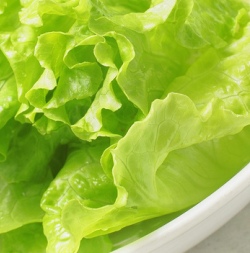Lettuce (Lactuca Sativa ) is a hardy annual plant of the aster or
sunflower family Asteraceae. Lettuce as we call it, is most often used for
salads, although it is also seen in other kinds of food, such as soups,
sandwiches and wraps. One type is grown for its stems, which are eaten either
raw or cooked. Lettuce is a good source of vitamin A and potassium, as well as
minor source for several other vitamins and nutrients. Despite its beneficial
properties, contaminated lettuce is often the cause for bacterial, viral and
parasitic outbreaks in humans.
Lettuce seeds are commercially grown to prevent the induction of thermo
or photo-inhibition during the germination process. A secondary advantage of
lettuce seed priming is a faster rate of radicle emergence across temperatures
when seeds are planted. The combination of these advantages allows for more
rapid and uniform field emergence, less variation in plant size, and thus a
greater number of cartons per acre at harvest packout. It is most often grown
as a leaf vegetable, but also sometimes for its stem and seeds. Lettuce was
first cultivated by the ancient Egyptians, who turned it from a weed whose
seeds were used to make oil into a plant grown for its leaves. It spread to the
Greeks and Romans, who gave it the name "lactuca", from which the
modern "lettuce" ultimately derives.
 |
| Iceberg Lettuce |
 |
| Chinese Lettuce |
Types of lettuce:
- Butterhead/Bibb lettuce
- Chinese lettuce
- Crisphead/Iceberg (until 1920’s it was called the crisphead but was renamed when California began transporting large quantities under mounds of ice to keep it cool.
- Loose leaf/Green leaf lettuce
- Romaine/Cos
Read more about Lettuce: http://seedbuzz.com/knowledge-center/article/lettuce-seeds

No comments:
Post a Comment